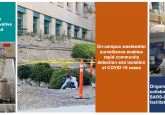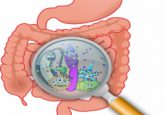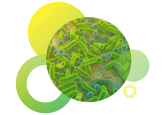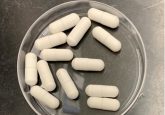The killer whale’s microbial secrets

The killer whale’s microbiome reveals a new reason why the species is endangered.

Known for being both majestic and cruel, killer whales have spent a lot of time in the spotlight. They appear in the news connected with the deaths of trainers in theme parks and in nature documentaries displaying their exceptionally coordinated hunting behaviors. With how frequently we see and hear of them, it’s easy to forget that some of these orcas rank among the world’s most endangered species.
In December 2016, conservationists estimated that only 78 Southern Resident Killer Whales still roamed the North Pacific, a number that has steadily fallen since the late 1990s. A reduced food supply and noise from boats contribute to their decline, as does pollution. Since deceased whales often show signs of respiratory infection, Stephen Raverty from the University of British Columbia and his colleagues decided to investigate the microbiomes of healthy killer whales. In the process, they uncovered another danger for these whales: pathogens.
Designing studies of killer whales is not an easy task. With so few animals to test, and with each protected heavily by regulations, how could the researchers collect samples to test a killer whale microbiome? “Raverty and his colleagues found a way to assess health by collecting microbiota and pathogens when the whales exhaled between dives. It is an ingenious way to give whales a checkup,” explained Andrew Trites from the University of British Columbia who was not involved with the study.
For four years, Raverty and colleagues watched the movement of 3 whale families near the shores of the San Juan Islands of Washington state, seizing every opportunity to approach an animal from behind with their vessel. Extending a petri plate attached to an aluminum pole above the blow hole, they would wait for the whale to surface and exhale. With a quick flip of the wrist, they dislodged the lid, which was held in place at a single point with tape, exposed the plate to the whale breath, and twisted the pole again to close the lid. In time, they collected 26 samples from 12 different killer whales using this approach, along with samples from the sea surface, air, human breath, and rain to ensure that the whale breath samples weren’t contaminated by other microbes in the environment. They later analyzed these samples using bacterial culture and PCR.
Raverty’s group found that the breath samples were significantly different from the sea surface, indicating that the animal didn’t simply aerosolize the ocean as it emerged. While most of the fungi and bacteria exhaled by the whales were commensal, Raverty and his team also found pathogens such as Staphylococcus epidermidis, Staphylococcus aureus, Pseudomonas fluorescens, and Salmonella enterica.
“We’re not sure if these microbes naturally occur in the marine environment or if they may be terrestrially sourced,” said Raverty in a press release. “These animals are long ranging and as they migrate along the coast, they are exposed to agricultural runoff and urban discharge, which may introduce a variety of microbes into the water.”
Raverty’s team identified multiple antibiotic-resistant bacteria in the whale breath and on the sea surface. Additionally, sea surface samples contained several pathogens related to human fecal contamination, indicating that indirect interaction with humans has introduced pathogens that affect the lung microbiomes of healthy whales. These pathogens have also shown up in necropsy of dead whales, leading the researchers to add pathogens as a fourth cause for killer whale decline.
The spread of antibiotic-resistant bacteria has important implications not just for whale populations and other marine animals, but also for people who work in marine environments or who eat seafood that may be contaminated by human waste. Raverty’s team hopes to expand their current work by using drones to noninvasively collect additional samples over longer time courses from greater numbers of killer whales as well as to explore testing options that aren’t culture-dependent.





